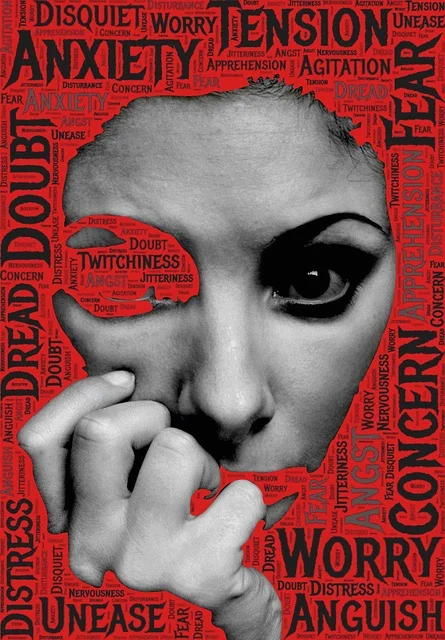The causes of separation anxiety disorder is important to know, if u want to seek proper treatment and counselling. This article explains all the possible causes of separation anxiety disorder.
What is separation anxiety disorder?
A mental health disease that affects both adults and children is separation anxiety disorder. When someone is separated from a close attachment figure or knows they will soon be separated, it makes them experience extreme worry or anxiety. The anxiety and terror are not developmentally appropriate and are out of proportion to the circumstances. A parent is typically a kid’s attachment figure, but it can also be any caregiver or grandparent with whom the child has developed a strong tie. Adults typically experience anxiety for their romantic relationship or child.

The phrase “separation anxiety” may be known to you; it refers to the feelings that babies get when their primary caregiver leaves them. This is due to the fact that babies naturally experience separation anxiety as they grow and learn more about the world around them. Usually, they grow at the stage of three.
Causes of separation anxiety disorder
Although the precise origin of separation anxiety disorder is unknown, researchers think that a combination of environment and heredity is probably responsible. For instance, a person may be born with a genetic alteration (mutation) that modifies the function of specific brain chemicals.
However, a condition may not always be caused by genetics. Environmental factors, such as a significant life transition or a traumatic childhood experience, are probably also involved. These kinds of things can alter your genes’ chemical makeup, or epigenetic modifications, which alter how your genes function. For instance, certain epigenetic modifications may have an impact on how your body’s cells “read” the genes that regulate your stress response.
- An important traumatic or stressful incident that occurred in the child’s life, like a hospital stay, the loss of a pet or loved one, or a move that resulted in a change in surroundings (like relocating to a new home or school)
- Overly protective parents may make their kids more likely to experience separation anxiety. In fact, as parents and children can fuel each other’s fear, it might not even be an illness in the child but rather an indication of parental separation anxiety.
- There may be an inherited component to separation anxiety in children as these diseases are frequently present in family members who also suffer from anxiety or other mental health issues.
- Uneasy bonding with parents or other caretakers
- Emphasize
- Additional anxiety disorders, such as agoraphobia, phobias, panic attacks, or social anxiety
- Among addition to depression, obsessive-compulsive disorder (OCD) is also common among children with SAD.
Factors at risk
The following factors may put a youngster at higher risk of separation anxiety disorder:

- Suffer the loss of a close personal member.
- Go through a trying time, such as their parents divorcing.
- Make a change of schools or relocate.
- Possess a biological family history of anxiety problems.
Adults that are susceptible to separation anxiety disorder include:
- Death of a dear one.
- A loved one is ill.
- Significant life transitions include moving, starting a love relationship, and having children.
- Childhood diagnosis of anxiety disorder.
- Diagnosis of further anxiety disorders or mental health issues in adulthood.
Signs and symptoms
SAD symptoms appear when a youngster is taken away from their parents or other primary caretakers. Anxiety-related actions might also result from a fear of separation. Among the most typical actions are:

- clinging to one’s parents
- intense and painful weeping
- refusal to perform tasks that call for separation; physical ailments such headaches or vomiting;
- and intense
- emotional outbursts
- unwillingness to attend educational institution
- inadequate academic achievement unable to engage with other kids in a healthy way
- unable to sleep alone and having nightmares
Treatment for Separation Anxiety Disorder
Treatment for separation anxiety disorder is usually not necessary in mild cases. Also Treatment can be required in more extreme circumstances or if the youngster refuses to attend school. The treatment’s objectives are to lessen the child’s anxiety, help them and their caregivers feel more secure, and teach them and their family why natural separations are necessary. Among the possible treatments are:
- Cognitive behavioral therapy (CBT): is the primary treatment for separation anxiety disorder. The goal is to support the child in adjusting to being away from their caregiver without causing them any distress or making it difficult for them to function. Through this therapy, the child’s thinking (cognition) is reshaped to help them behave in more suitable ways. In addition to educating the family on the disorder, family therapy may help parents better support their anxious child.
- Medication: Severe forms of separation anxiety disorder may be treated with antidepressants or other anti-anxiety drugs.
- School intervention: Your child’s school’s mental health professionals can provide therapy to assist them cope with the symptoms of SAD.
- What guardians can do: To learn more about how SAD impacts your child in their day-to-day lives, speak with their therapist. Ensure that your child can keep scheduled therapy appointments. Better outcomes will come from regular treatment. To assist your child in managing their emotions at home or at school, identify the sources for your child’s anxiety symptoms and use therapeutic strategies.
How separation anxiety disorder affects family dynamics
Social and emotional development are negatively impacted by SAD. A youngster with this disease may avoid experiences that are essential to their regular growth.

Family life is also impacted by SAD. A few of these issues could be:
- Family activities hindered by unfavorable conduct
- parents who rarely have time for themselves or each other,
- which leads to dissatisfaction siblings who feel envious of the additional care provided to the SAD child
Consult your doctor about treatment options for your child’s SAD and how you may help manage the impact it has on your family’s life.



